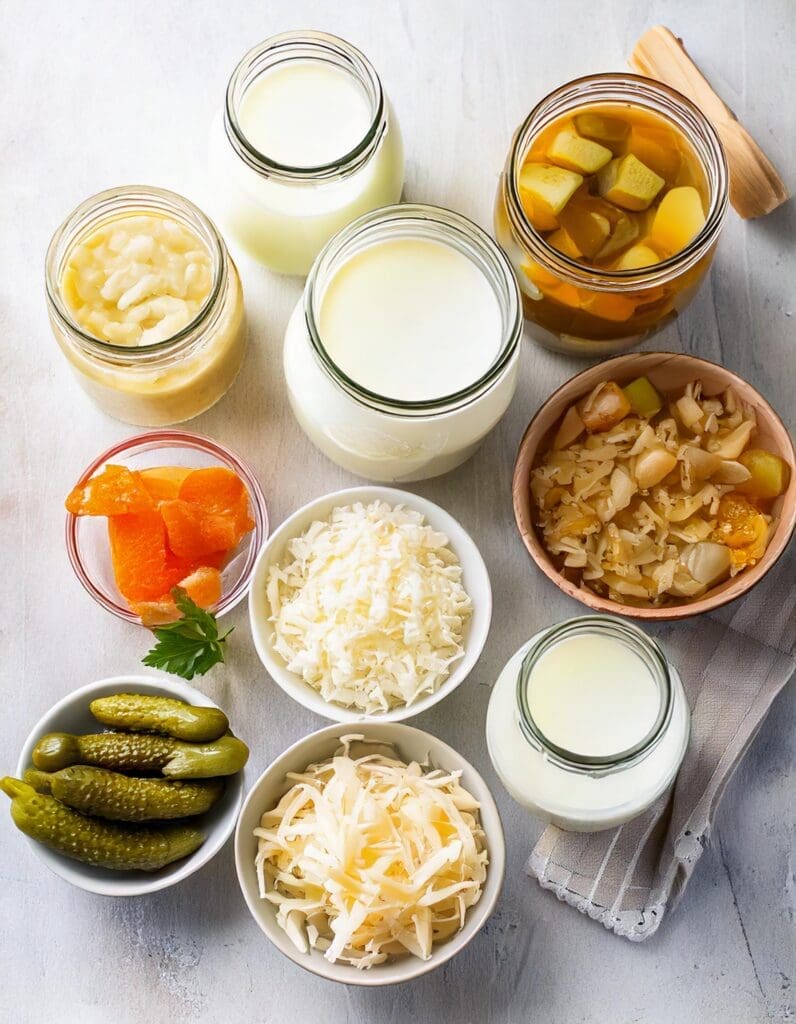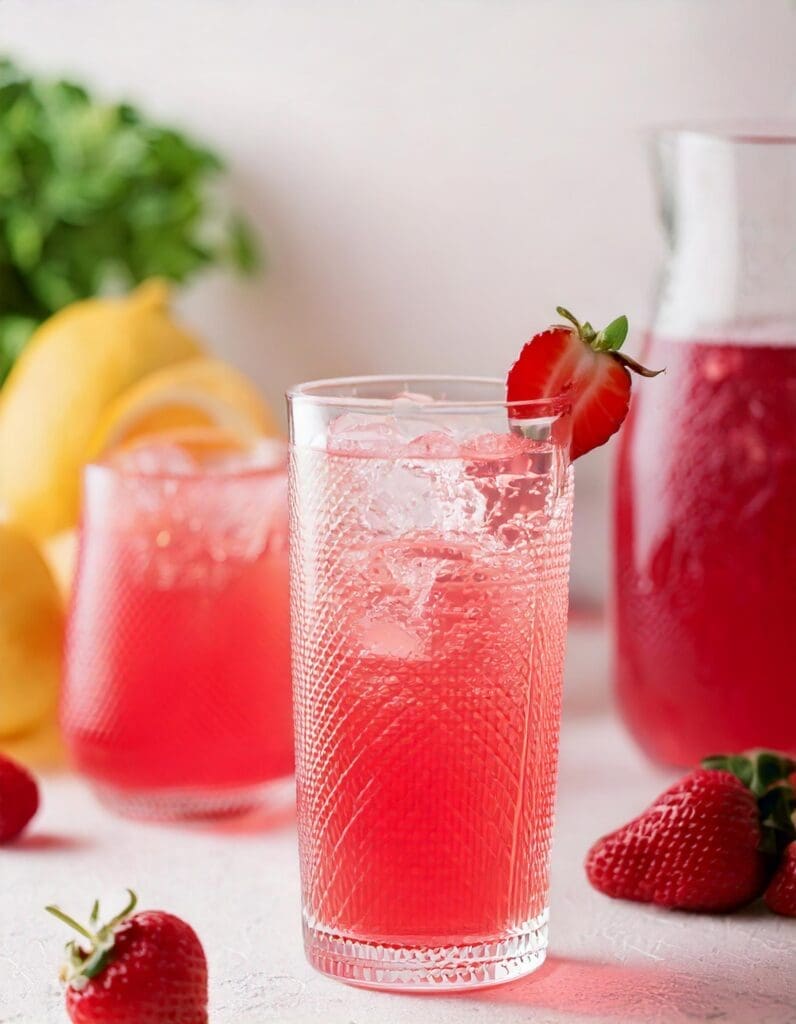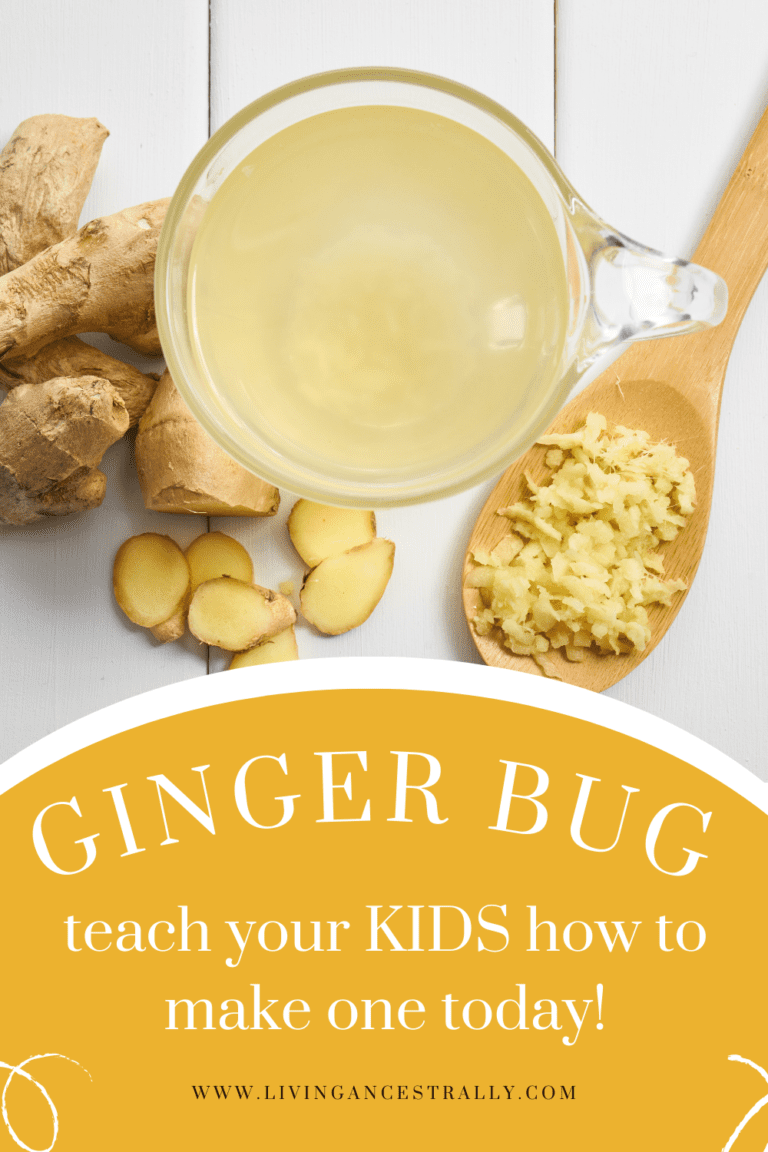Kids & Probiotics: A Simple Way to Boost Their Intake
Did you know that an unhealthy gut can have a negative impact on our kids’ lives (as well as ours)? It can cause poor nutrient absorption, inflammation, and decreased production of energy. Not only that, poor gut health can drain energy levels, reducing the amount of usable calories you get out of foods, and leading to symptoms such as bloating, gas, diarrhea, constipation, headaches, fatigue, and sensitivities to certain foods.
As parents, I know we don’t want our kids to have to deal with any of that – now or in the future!
Research is continuing to reveal that by improving the health of our gut microbes, we can improve many modern-day health conditions. Adding probiotic-rich foods into the diet on a daily basis is one simple yet tasty way to boost our children’s gut health!

Probiotics are healthy bacteria and yeast that live in our digestive tracts. They are also in certain foods that are cultured and/or fermented. Probiotics are our gut’s best friends, fighting off unwanted invaders and regulating processes in our bodies.
By prioritizing our family’s gut health, our energy should improve and the level of inflammation in our bodies should plummet! It’s not a quick fix though. More work may need to be done if gut microbes are severely imbalanced and/or if someone has a leaky gut. The gut lining needs to be sealed before adding probiotics to the body.
Healing My Gut…
Due to my chronic gut health issues, I am extremely passionate about educating parents on how to help their kids have healthy guts.
It took me YEARS to figure out how to truly heal my own gut. I struggled for years with brain fog, mouth sores, congestion, inflamed muscles and joints, fatigue, PMS issues, poor digestion, and more. Some of those symptoms started when I was a young child.
I was even diagnosed with chronic fatigue syndrome and an autoimmune disease known as lupus.
The GAPS diet, the anti-candida diet, a gluten-free diet, the paleo diet, the low histamine diet, and the keto diet also didn’t help. And the vegan diet certainly didn’t help. Some of those diets have their merits and do help people, but unfortunately, they didn’t help me to the point where my gut was healed.
After a lot of trial and error as well as many years of my own research, my gut has finally reached the point where I don’t negatively react when I consume chocolate, tea, vinegar, mustard, tomato-based dishes, grains, beans, any type of sugar, and more. I still limit these foods due to the plant anti-nutrients that they contain, however, when I do choose to eat them, I don’t react like I used to.
I changed a lot of things within my diet and lifestyle that contributed to the healing of my gut. I did a lot to improve my gut. I wrote about some of the things I did HERE.
I only mention my story in case it’s helpful to someone else. Probiotics are wonderful in their own right, however, adding probiotics through a supplement or probiotic-rich foods isn’t always the answer for everyone. For most people it’s appropriate, however, some people need to seal their leaky gut first before even thinking about adding probiotics to their gut. In fact, I had to follow a certain process to seal the lining of my gut before I could add probiotics back in again.
If you’d like more of a simple, step-by-step guide on how to take initial steps to improve your gut health then feel free to check out my ebook: How to Boost Your Energy by Improving Your Gut Health: 6 Simple Steps. Check it out for FREE today!
Probiotics for Kids
As long as your kids can tolerate probiotic-rich foods, then I highly recommend you consider making your own healthy probiotic foods! Your kids will probably LOVE to help. It’s like a fun science experiment.
Below I’ll share one of the easiest ways to get started in the world of fermentation.
Or if you’re an experienced fermenter then maybe you’ll learn something new!
For even more guidance on “how to have a healthy gut”, I have written a Family Health Course called Healthy Gut – Ancestral Living for Families in which parents can guide their kids on how to have a healthy gut for life! It includes practical, hands-on activities and recipes that kids can do with their parents or on their own if they are older. Feel free to check it out!
How Do I Ferment Food?
I like to recommend a simple ginger bug when people are first starting to ferment.
Don’t worry, there’s no actual “bug” in the ginger bug recipe! Using a ginger bug to ferment drinks like lemonade or a healthy soda is a fun and excellent way to get started in the world of fermentation. Ginger bugs create a naturally fizzy drink since the microbes within the ginger release CO2 as they eat the sugar. Kids LOVE fizzy drinks which makes a fermented soda an excellent opportunity to add probiotics into their guts.
Even if you have made fermented foods before, but are wanting to try your hand at “wild fermentation”, then I’d encourage you to grow a ginger bug! The wild yeasts and natural bacteria (healthy microbes) already within the ginger itself actually eat the sugar you put in the mixture. A starter culture like whey is not necessary for this fermentation process.
It’s so simple to grow a ginger bug and care for it. See the steps below! In addition to fermented beverages, ginger bugs are also often used to make fermented fruit dishes which are a fun and healthy way to eat fruits.
Now let’s dive into how to actually make a ginger bug!
Ginger Bug Recipe
Ingredients
• 1 large ginger root piece (approx. 4-6 inches), unpeeled & minced in a food processor (you should have extra that you’ll set in the fridge)
• 2 TBSP of organic granulated cane sugar
• 2.5 cups of distilled water
Directions
Starting Your Ginger Bug
1. Add the ginger root to a food processor and mix for about 30-60 seconds. Take out the ginger, leaving about 2 TBSP of it in the food processor.
2. Add the sugar to the food processor and pulse with the 2 TBSP of ginger.
3. Pour 2.5 cups of distilled water into a quart-sized jar.
4. Add the ginger root and sugar mixture to the water in the jar.
5. Secure the mixture with a lid and set it aside out of direct sunlight.
6. Each day, add an additional 2 TBSP of pulsed ginger root, 2 TBSP of filtered water, & 2 TBSP of sugar.
7. Shake the mixture 1-2 times a day.
8. Each day, before or after you shake the mixture, unscrew the lid to let pressure escape. Screw back on. Your jar could explode if you don’t let the CO2 gas escape.
9. Check if there are bubbles after 2 days. You can stop the fermentation process once you see bubbles. It may take up to 7 days to see bubbles depending on your kitchen temperature. Your ginger bug will be ready more quickly in a warmer kitchen.
10. Once done, strain the ginger bug and use 1/4 cup of the liquid to make a fermented beverage. You can use the ginger bug again though! See below for how to “rest” your ginger bug.
How Do I Use My Ginger Bug?
If you properly care for your ginger bug (by feeding it) then you can always have it on hand to make probiotic-rich beverages and fermented fruit.
As already mentioned, fizzy fermented sodas are a fun way to add probiotics to your family’s weekly probiotic rotation. To make a fermented soda with your ginger bug, you’ll simply add about 1/4 cup of your strained ginger into the drink you’re wanting to make.
Our current favorite fermented drink for spring is Strawberry Lavender Lemonade! We like to change our fermented sodas on a seasonal basis so that we are consuming more seasonally-available foods as ancestral people did.

Resting Your Ginger Bug
✔️ You can reuse your ginger bug for future use by keeping 1 cup of the strained ginger bug liquid.
✔️ Place the strained ginger bug liquid in a jar in the fridge.
✔️ Feed the ginger bug with 2 TBSP of minced ginger, 2 TBSP of sugar, and 2 TBSP of distilled water once a week. Place back in the fridge to store until needed.
✔️ You may need to remove some of the liquid and solids if your ginger bug has been resting in the fridge for a while. Try to keep the jar half full while in the fridge.
✔️ To use a rested ginger bug in a recipe, simply feed it and then let it come to room temperature before using it in a recipe.
✔️ Resting your ginger bug (by feeding it and keeping it in the fridge) is an excellent way to always have a probiotic-rich option on hand at all times!
Improving Gut Health
Hopefully, you feel inspired to improve the gut health of your family. It’s a fun and worthwhile mission! A healthy gut is one of the biggest gifts we can give to our kids.
Now that you know all about ginger bugs, the benefits of having a healthy gut, and how to make one with your kids, it’s time to get brewing! Try delightful fermented foods as an easy and enjoyable way to improve your family’s gut health.
As with all recipes – especially those involving bacteria – remember to clean your materials and sanitize surfaces for best practices.
Don’t forget – you can experiment with different ingredients or flavors when making your fermented beverages. Let us know if you decide to make a ginger bug or any other fermented food – we would love to see it! Tag us on Instagram (@LivingAncestrally) for a chance to get featured on our page. We hope this post gave you the confidence and tools necessary for you and your loved ones to support good digestion with ease.
Please note that A Hair Mineral Analysis (HTMA) is not intended to diagnose, treat, cure, reverse, or prevent any disease. It is not intended to replace any other medical test(s) that may be prescribed by your medical doctor.


